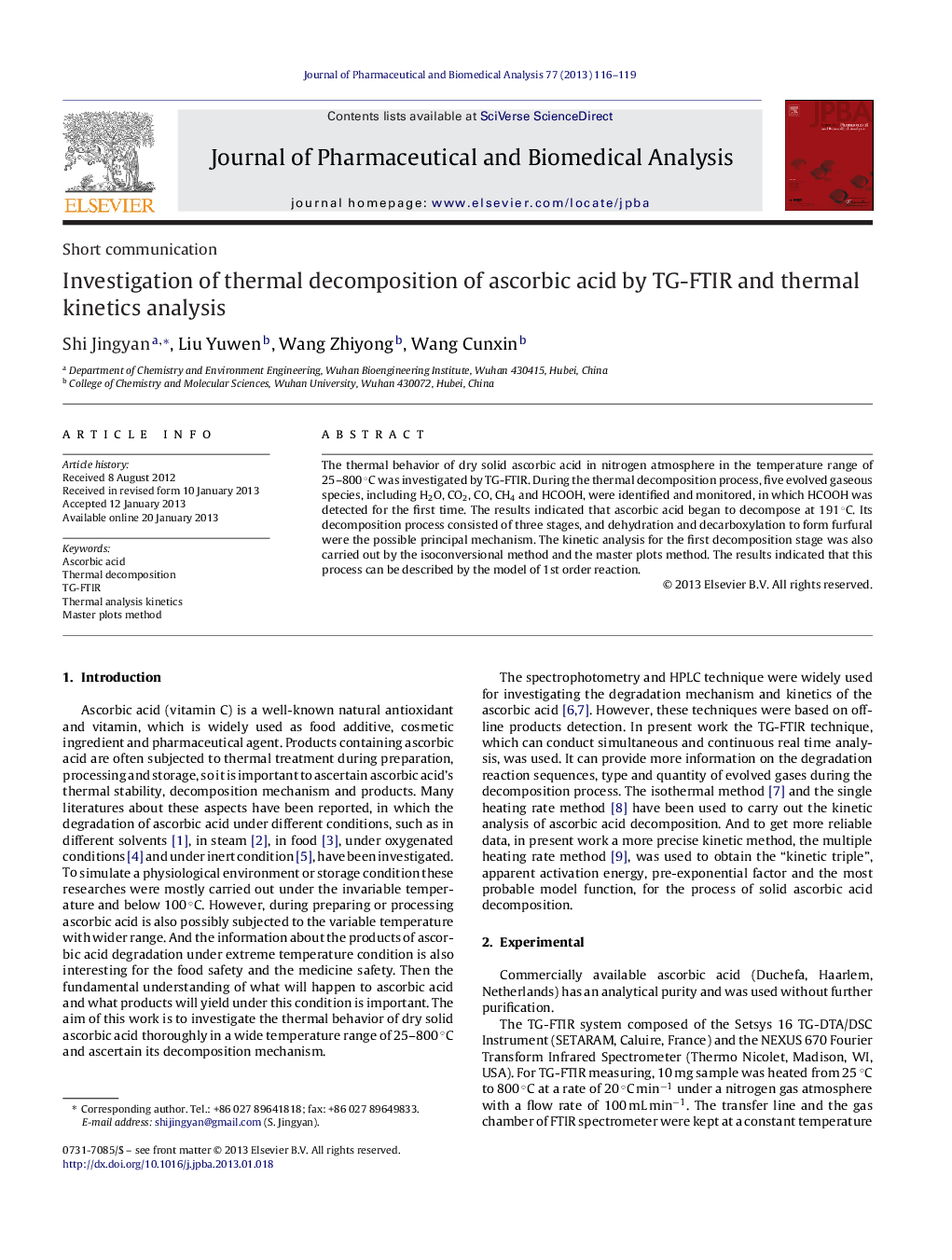| Article ID | Journal | Published Year | Pages | File Type |
|---|---|---|---|---|
| 1221979 | Journal of Pharmaceutical and Biomedical Analysis | 2013 | 4 Pages |
The thermal behavior of dry solid ascorbic acid in nitrogen atmosphere in the temperature range of 25–800 °C was investigated by TG-FTIR. During the thermal decomposition process, five evolved gaseous species, including H2O, CO2, CO, CH4 and HCOOH, were identified and monitored, in which HCOOH was detected for the first time. The results indicated that ascorbic acid began to decompose at 191 °C. Its decomposition process consisted of three stages, and dehydration and decarboxylation to form furfural were the possible principal mechanism. The kinetic analysis for the first decomposition stage was also carried out by the isoconversional method and the master plots method. The results indicated that this process can be described by the model of 1st order reaction.
Graphical abstractFigure optionsDownload full-size imageDownload as PowerPoint slideHighlights► TG-FTIR was used to investigate the thermal behavior of ascorbic acid. ► Dry solid ascorbic acid begin to decompose at 191 °C and the decomposition process consists of three stages in the temperature range of 191–800 °C. ► Five species of evolved gases CO2, CO, H2O, CH4 and HCOOH were detected, in which HCOOH was identified for the first time. ► The isoconversional method and the master plots method were applied to thermal kinetic analysis. ► The first stage of ascorbic acid decomposition can be described by the model of 1st order reaction.
